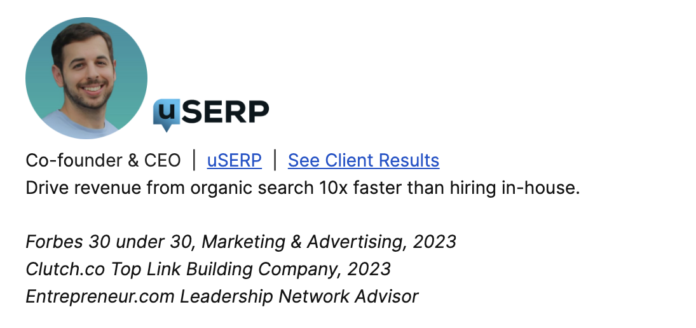Create your very own Auto Publish News/Blog Site and Earn Passive Income in Just 4 Easy Steps
When a customer visits your website, the ultimate goal is to get them to make a purchase. Unfortunately, customers aren’t ready to buy during the discovery phase of the buyer’s journey.
Instead, they’re mostly looking for information. And eventually, if they trust your brand enough, they may choose to make the ultimate purchase decision.
But before it reaches that point, potential customers may subscribe to your newsletter to receive a deliverable or lead magnet that promises to answer their burning questions or help solve their frustrating problems.
However, throughout the buyer’s journey, the customer may disengage and stop opening emails or interacting with your brand altogether. If this happens, many brands will implement re-engagement campaigns to warm up cold leads.
Of course, it’s not that simple of a solution because certain obstacles may get in the way. Let’s look at some common re-engagement campaign challenges and different ways to overcome them.
Common Re-Engagement Campaign Problems and How to Fix Them
1. Finding the Right Users to Segment and Target
Determining why someone has decided to disengage with your brand can be difficult because it can happen for different reasons, such as a change in current priorities or needs. Or, they may have had a poor user experience.
So, some companies struggle to create relevant and personalized messaging for each segment because they can’t determine the root cause of disengagement.
One way to fix this problem is simply by asking your subscribers why they haven’t engaged lately. Consider conducting a survey to gather this information. If you’re worried about participation, offer incentives.
Analyze the responses and document the most common ones. Did most people on your email list have a poor user experience? Did you accidentally include a broken link in your campaign?
Remember that every element of your communication strategy matters. Adding a well-crafted email signature is an often overlooked aspect of email marketing.
While it might seem like a minor detail, a professional email signature can play a vital role in rekindling connections with your audience.
One of the key challenges in re-engagement is reminding recipients of who you are and what your business represents. An email signature, which you’ll place at the bottom of your correspondence, provides a consistent reminder of your brand.
Jeremy Moser, the CEO of uSERP, even adds industry credentials to his signature to reduce doubt that he’s a credible person in the world of digital marketing.
By incorporating your logo, company colors, and essential contact information, you create a cohesive experience that reinforces your identity. This visual consistency can trigger recognition and enhance trust, which is crucial for encouraging recipients to re-engage.
There are many ways to personalize your email signature. You can use email signature templates or, if you have in-house designers, have a team member craft a branded signature for you. The most important thing to remember is that it’s consistent with your brand and enhances your user experience.
For example, you could add a CTA to your email signature as part of your re-engagement campaign. Including a “Learn More” or “Schedule a Demo” CTA could increase conversions.

Image Source
2. Creating Subject Lines That Encourage Clicks
Nearly half of email recipients will open emails based on the subject line alone. So, if your subject lines aren’t eye-catching, subscribers may scroll right past your email. Or worse, delete it.
Here are some effective strategies for creating click-worthy email headlines:
- Use actionable language: “Sign up..”, “Get your…”, “Join our,” etc.
- Get personal: Consider tactics like using subscribers’ first name, location, etc.
- Use numbers: Start the subject line with a number (e.g., 5 Ways to Save on Car Insurance).
- Ask questions: Pique the curiosity of subscribers with questions and question words like “who,” “what,” “when,” “where,” and “how.”
United Airlines uses “act now” to get subscribers’ attention, create a sense of urgency, and drive clicks.

3. Not Using Tools to Streamline Campaigns
When you’re not leveraging the right tools to save time and effort, the quality of your re-engagement campaigns may suffer.
Technology, such as artificial intelligence and automation, can help take some guesswork out of segmenting audiences and creating targeted messaging.
Platforms like Benchmark Email, known for its expertise in email marketing, can offer valuable insights and automation features to target disengaged customers and drive deeper engagement.
Our experts often emphasize the importance of timely communication, automation workflows, and personalization — all of which you can effectively manage through their platform.
Another tool you could use is customer relationship management (CRM) software. Remember, the goal is to reconnect with customers who once showed interest in your brand and to do business with you again.
A CRM can help you do that with the help of these features:
- Workflow automation: Keep track of all customer communications and send automated messages.
- Third-party integrations: Integrate with other software and automatically sync sales and orders or automatically create email lists
- Lead management: Keep track of where your customers are in the sales cycle.
- Real-time data: Understand the market and make informed decisions.
4. Showing the Value of Your Product or Service in Your Emails
When promoting their brands and/or products through email, companies often fall short because they don’t show the value they have to offer.
A big reason for this is that emails are brief. They require you to get your message across quickly. Or else you lose the interest of your prospects. Because of this, it can be tricky to show how valuable your product or service is in a short email.
In the image below, Tailor Brands showcases how to successfully highlight the benefits of using their business formation service. They do this by listing what they, as a company, will do for their customer, step-by-step — without the need to leave the comfort of their couch.
From allowing customers to go through their paperwork and make sure it’s up to their state’s standards to providing access to a dedicated registered agent, Tailor Brands shows how beneficial it can be to use their services to launch a new business.


You could also redirect your subscribers to another resource that expands on the message you’re trying to convey. For example, a great approach for niche products and services is to share a blog post or newsletter on the topic or a relevant FAQ.
Pumpkin, a leader in pet insurance, does this with their blog post, “Is Pet Insurance Worth It?”
By answering this common question, Pumpkin builds trust and authority with its target audience. They also make conversion simple by including a friendly button at the top of the blog post.

Image Source
By clearly showing the value of its product and removing almost every barrier for conversion, Pumpkin drives traffic through its sales funnel while providing an exceptional user experience along the way.
5. Not Having the Right Expertise
Another thing holding business owners back from creating results-driven re-engagement campaigns is a lack of expertise, and this is where sales enablement plays a crucial role.
This problem can be even more obvious in certain industries, such as real estate. Successfully re-engaging real estate leads may require different strategies than re-engaging leads in other industries.
The real estate market is unique, and homebuyers and sellers have specific needs. As a result, it can be a challenge to re-engage old leads. Leveraging real estate lead services can be a game-changer in overcoming these hurdles.
Companies with years of experience in real estate lead generation offer a targeted approach to reconnecting with dormant leads and providing crucial insights into their preferences and behaviors.

Image Source
Real estate agents often use platforms like Benchmark Email to precisely tailor their outreach efforts. That way, they can deliver relevant content, personalized recommendations, and enticing offers that resonate with recipients. As a result, real estate agents can revitalize interest and nurture valuable client relationships.
Re-Engage Lost Leads and Drive Conversions
Subscriber inactivity is bound to happen. But it’s still possible to minimize levels of disengagement. Use these strategies to revitalize customer relationships and drive more sales.
Here’s to your re-engagement success!
Author Bio

Born and raised in Atlanta, Britney is a freelance writer with 5+ years of experience. She has written for a variety of industries, including marketing, technology, business, finance, healthcare, wellness, and fitness. If she’s not spending her time chasing after three little humans and two four-legged friends, you can almost always find her glued to a book or awesome TV series.
Create your very own Auto Publish News/Blog Site and Earn Passive Income in Just 4 Easy Steps







